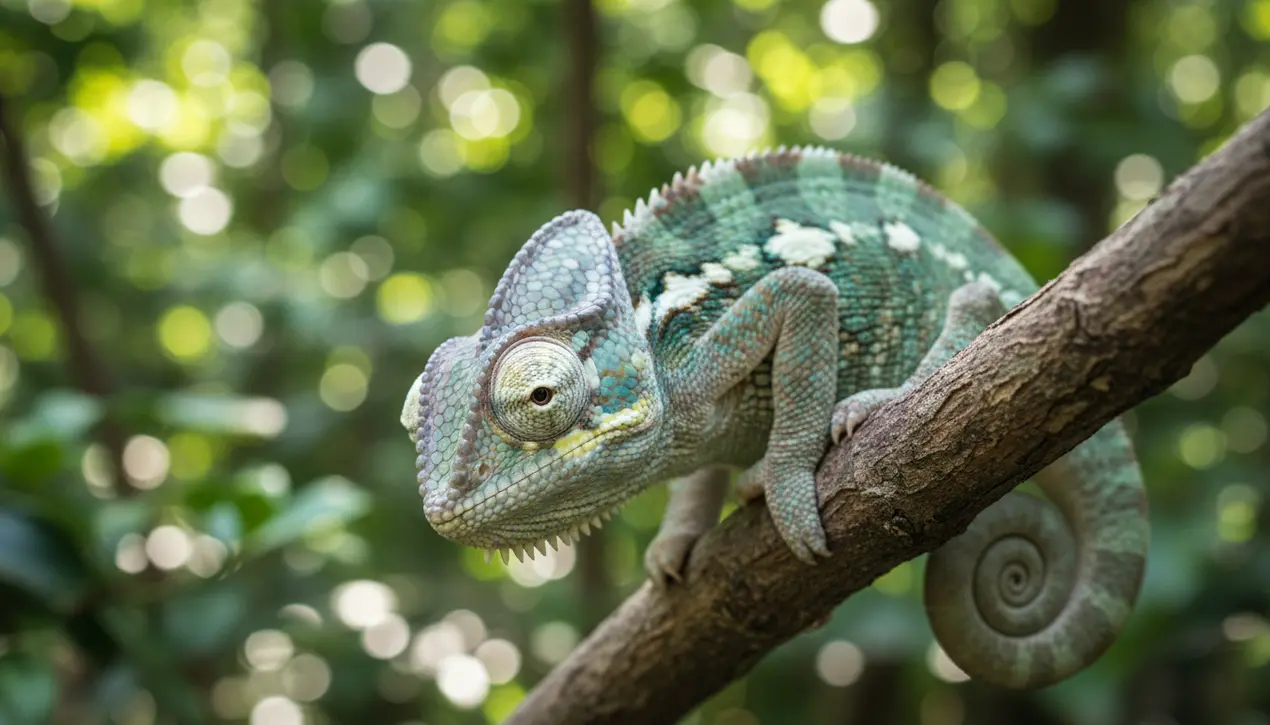
SciencebiologyAnimal Behavior
Scientists Discover the Reason for Chameleons' Unique Eyes.
TH
Thomas Green
5 hours ago7 min read5 comments
For decades, the chameleon's bizarre, independently rotating eyes have represented one of evolutionary biology's most captivating puzzles, a marvel of natural engineering that has consistently defied simple explanation. Unlike the comparatively rudimentary ocular systems of most vertebrates, where eye movement is constrained and coordinated, the chameleon possesses a visual apparatus of staggering complexity and freedom, allowing each eye to perform a complete, 360-degree scan of its environment in a seemingly alien and disjointed fashion.This unique capability provides an immense survival advantage, enabling the reptile to track potential prey like flies with one eye while simultaneously scanning for predators like birds with the other, all without moving its head and betraying its position. The long-standing mystery, however, has centered on the biomechanical mechanism enabling this unparalleled range of motion.How could an eye rotate so freely within its socket without severing the critical optic nerve and blood vessels that tether it to the brain? The answer, recently unlocked through sophisticated 3D modeling and high-resolution computed tomography (CT) scans, is as elegant as it is unexpected: a revolutionary spiral-shaped optic structure. Researchers discovered that the chameleon's optic nerve is not a taut, vulnerable cable but is instead intricately folded into a conical, helical arrangement, much like a coiled telephone cord from a bygone era.This spiraling configuration provides the necessary slack and flexibility, allowing the nerve to twist and untwist smoothly as the eye swivels through its extraordinary range without sustaining damage. This discovery fundamentally alters our understanding of musculoskeletal systems in nature, presenting a solution that is mechanically superior to anything human engineers have devised for robotics or optics.The implications extend far beyond herpetology, offering potential blueprints for next-generation medical imaging devices, advanced surveillance systems, and even the design of robotic vision systems where unrestricted, multi-directional sight is paramount. The chameleon's eye is no longer just a biological curiosity; it is a masterclass in functional morphology, a testament to evolution's patient, iterative genius.It forces us to reconsider the very definitions of efficiency and adaptation, demonstrating that sometimes the most advanced solutions are not about adding more complexity, but about reconfiguring existing components in a profoundly smarter way. This finding opens up new frontiers in biomimicry, suggesting that the secrets to overcoming some of our most persistent engineering challenges may have been hiding in plain sight, silently observing the world from every conceivable angle.
#chameleons
#eyes
#3D modeling
#CT scans
#vision
#biology
#featured
Stay Informed. Act Smarter.
Get weekly highlights, major headlines, and expert insights — then put your knowledge to work in our live prediction markets.
Related News
Comments
Loading comments...
© 2025 Outpoll Service LTD. All rights reserved.